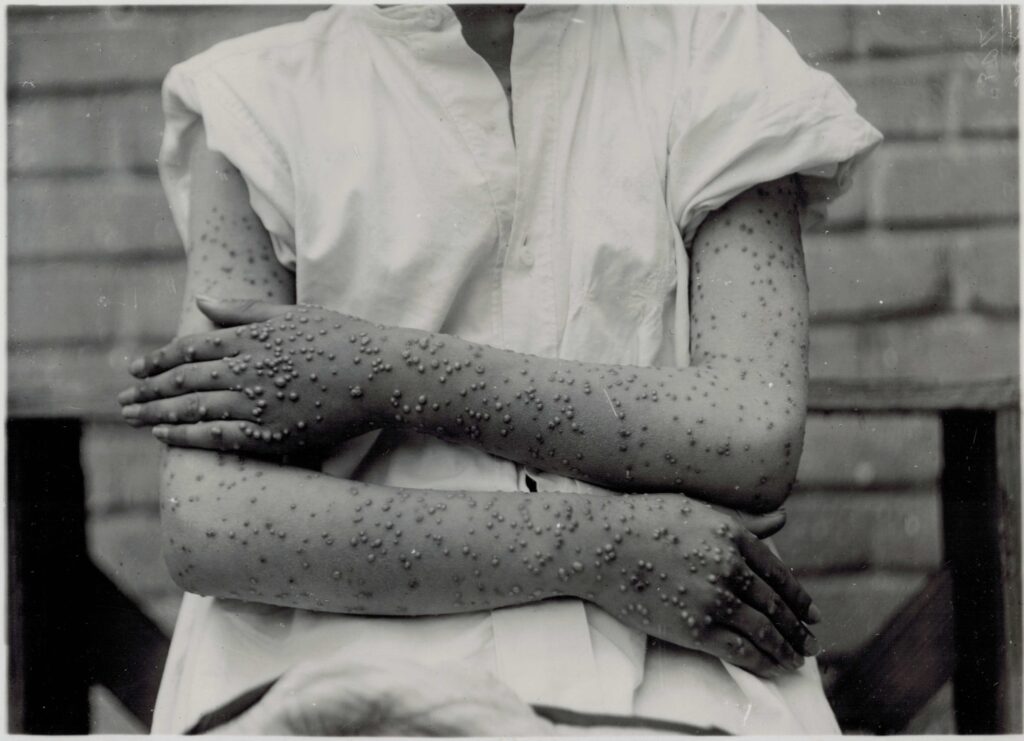This post is also available in:
 Deutsch
Deutsch
For centuries, smallpox was one of the most dreaded infectious diseases. No other illness, except for the black death, claimed as many lives in European history. Switzerland’s last smallpox epidemic was in 1921-1925. Fortunately, it was relatively mild.
Spreading from Zurich to all of Switzerland
The first smallpox case was reported in Oerlikon on 8 May 1921. The patient was a 34-year-old woman, who had not been vaccinated against smallpox. More cases connected to this first case were soon detected. The symptoms had first been confused with those of chickenpox, a disease that shows a very similar clinical picture. When it became clear that it was smallpox, it was already too late to trace all infection paths.
More and more cases were now reported from neighbouring districts and surrounding communities. The disease spread along the railroad tracks to the next cities. From December 1921, there was a major outbreak in the industrial town of Näfels in the canton of Glarus. In 1922 and 1923, the cantons of Aargau and Bern were severely affected. Only the French speaking cantons and the Grisons, who had stick to compulsory vaccinations, were spared of the epidemic.

An atypically mild variety of smallpox
Affected were mostly the young and the unvaccinated. The majority of the reported cases in Zurich concerned persons under the age of 40. This came not as a surprise, because younger people were less likely to be vaccinated or revaccinated. Most of the German-speaking cantons had abandoned compulsory vaccinations at the end of the 19th century under the pressure of a growing antivax movement.
The variant of smallpox that appeared in Zurich was atypically mild. Doctors reported that in some cases, the course of the disease was even milder than chickenpox. This led to a comparatively low death rate, but made the diagnosis more difficult. The mild variety of the smallpox virus was hard to distinguish from the harmless chickenpox.
Mild variants of smallpox were nothing new. It was well known that mortality varied greatly for smallpox and could change over the course of an epidemic. For example a smallpox outbreak in Basel in March 1921 – which was not connected to the Zurich cases – showed a much higher mortality. Several deaths occurred within a very short time. The routes of infection could be traced and the epidemic stopped. The mild course of the Zurich epidemic, on the other hand, hampered the fight against the disease.


Isolation in the smallpox hospital
Where smallpox was diagnosed, the Zurich authorities took strict measures. The patients were isolated in the cantonal smallpox hospital. Their flats, beds and clothes were disinfected. Unvaccinated family members, neighbors and work colleagues received emergency vaccination. However, unvaccinated contacts who were not ill could not be prevented from working, since compensation for lost wages was paid only in the event of illness. This policy was taken despite the fact that smallpox was known to be contagious before symptoms appeared.
As with many infectious diseases, the less priviledged were more affected. Infections rates in Zurich were highest in the densly populated worker’s quarters of Aussersihl.

The epidemic is abating
Only in the course of 1923 – two years after the outbreak of the epidemic – the situation gradually started to improve. In April 1923, the Federal Council issued an amendment to the Epidemics Act. It allowed to impose compulsory vaccination in towns and for population groups affected by smallpox. As a result, the city of Zurich started to vaccinate the population on a large scale. In 1924, there were only few isolated cases. In 1925 no more smallpox cases were reported in Zurich.
In total, 5560 smallpox cases were recorded in Switzerland between 1921 and 1926. 15 people died. 8 of them in Basel, in the epidemic which was not connected to the later cases all over Switzerland.
